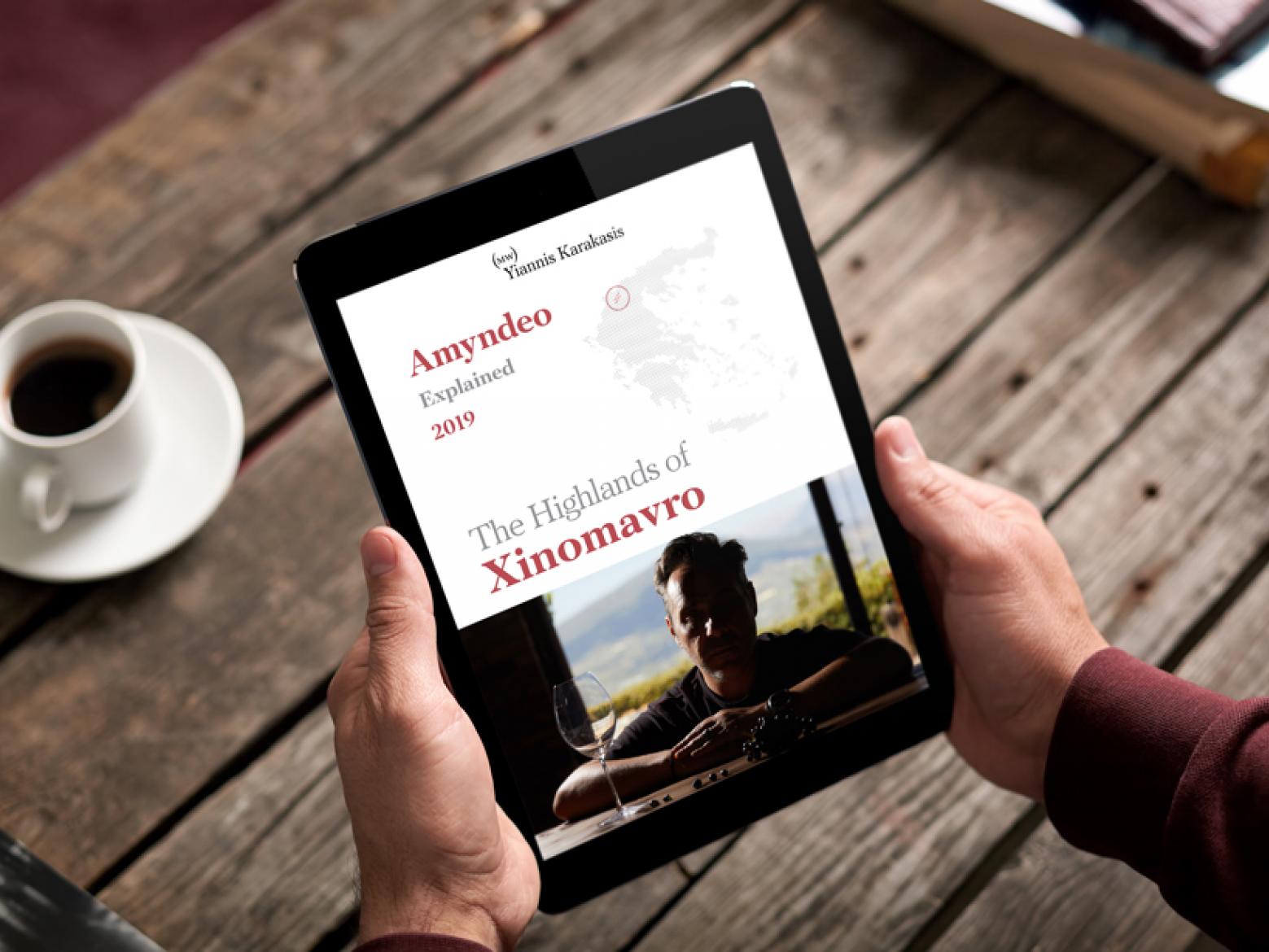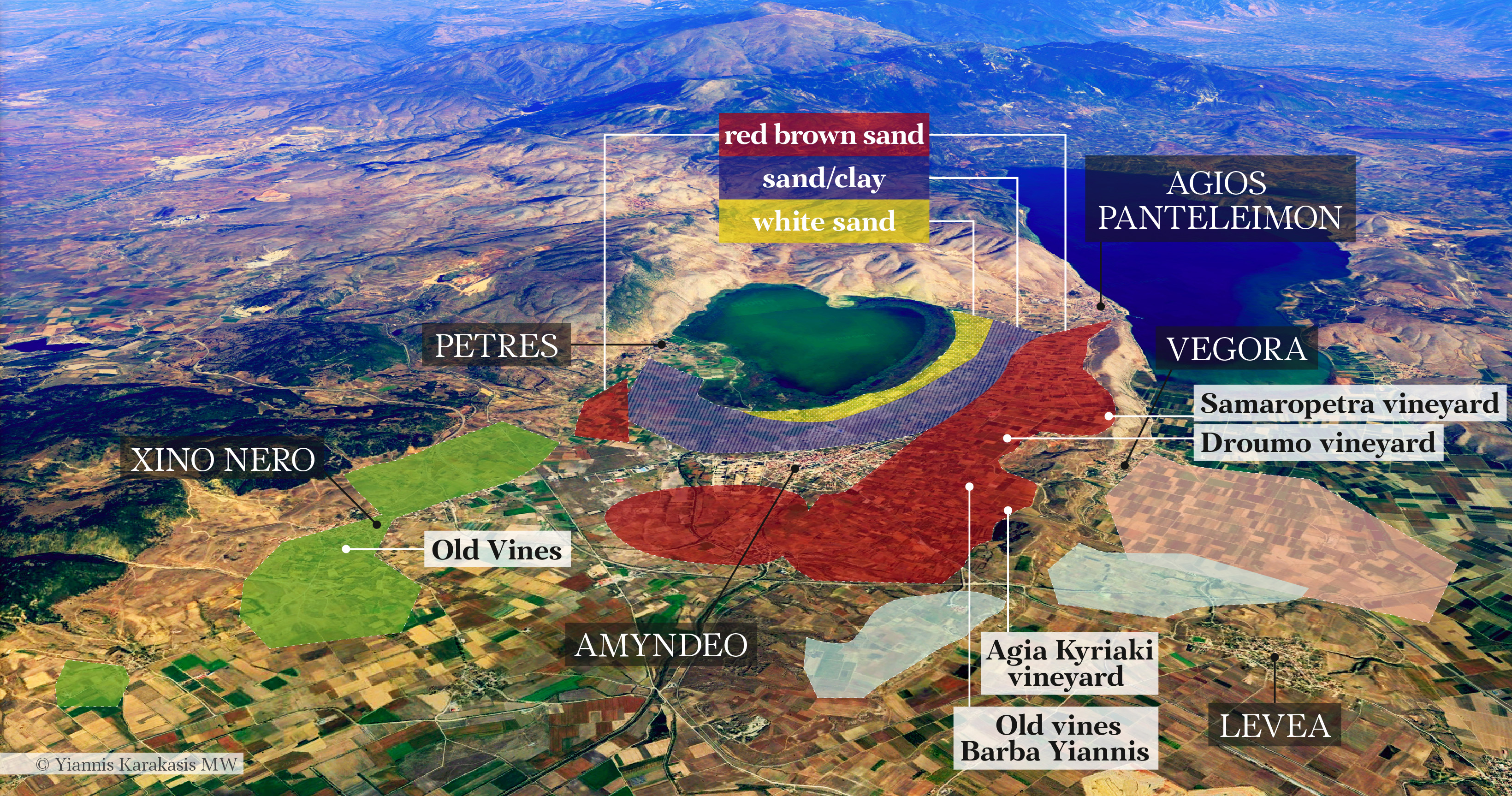Amyndeo Terroir Map
Amyndeo is one of the most important Greek PDO regions. It has gained much attention for its Xinomavro wines, which are produced in a more refined and lighter style compared to that of Naoussa. This is partly attributed to the lighter textured soils that have a lot of sand in their composition. In my Amyndeo Explained Report I have included a detailed terroir map with all the relevant information on soils and regions. It is the first of its kind in Greece and it links the soils of the different subregions to the styles of the wines produced. This is free to download for personal use (pictured below).
The information below is taken from the report which you can download here:
Agios Panteleimon
The village sub-zone of Ag. Panteleimon is home to most of the vineyards in Amyndeo. Their exposure is north/northwest, in contrast to the Xino Nero vineyards, which have southern exposition. Generally, soils are deep and sandy, with their fertility increasing (and water stress decreasing) the closer they are to Lake Petron. Agios Panteleimon boasts the oldest vines, with some exceeding 100 years of age. They are scattered throughout the zone as shown in the map. Ιn the following two years there will be scientific research on the subzones, which will analyse meteorological conditions together with the soils, and will make experimental vinifications, starting with the 2019 vintage.
Red zone: RED BROWN SAND
650-670m altitude. Soils in the sandy areas are 60-85% sand (red-brown sand coloration), with low fertility and low calcium carbonate (10-15%). Best suited to red varieties.
Blue zone: SAND/CLAY
600-620m. Sandy soils (more than 80% sand) have white coloration and at some points there is above 20% clay. Moderate fertility, high calcium carbonate (15-25%). Ideal for rosé wines and white varieties that love calcium carbonate (such as Roditis).
Yellow Zone: WHITE SAND
580-600m. Sandy soils (more than 85% sand) with white coloration, moderate to high fertility and high calcium carbonate (25-40%). Several cold soils with low phenolic ripening that encourage high yields, low sugars and very high acidity. Best for sparkling wines, fine rosé wines and white varieties (Sauvignon Blanc, for example, expresses herbal aromas when planted here). Suitable for the production of Blanc de Noir from Xinomavro.
Xino Nero
In contrast to the area of Agios Panteleimon, Xino Nero has a south-south eastern exposure. There is earlier ripening of the varieties. Soils are more fertile and with red colouring and varying degrees of limestone (up to 9% according to agronomist Mihalis Kotsiou). Rises up to 650 m in altitude.
Vegora
One of newer vineyard sites of Amyndeo, which began to be planted after 1990. This lower altitude vineyard zone is also the coldest. Sandy, high fertility area, at low altitude. Suitable mainly for white varieties. It is mostly planted with white varieties such as Sauvignon Blanc, Assyrtiko and Malagousia.
Levea
The newest zone of Amyndeo. Sandy clay soils, with low calcium carbonate. (5-9%) Some patches of limestone and red soils to the west. Not many vineyards are located in this area and they are planted mostly with Xinomavro, Merlot and Syrah. Southern exposure.





